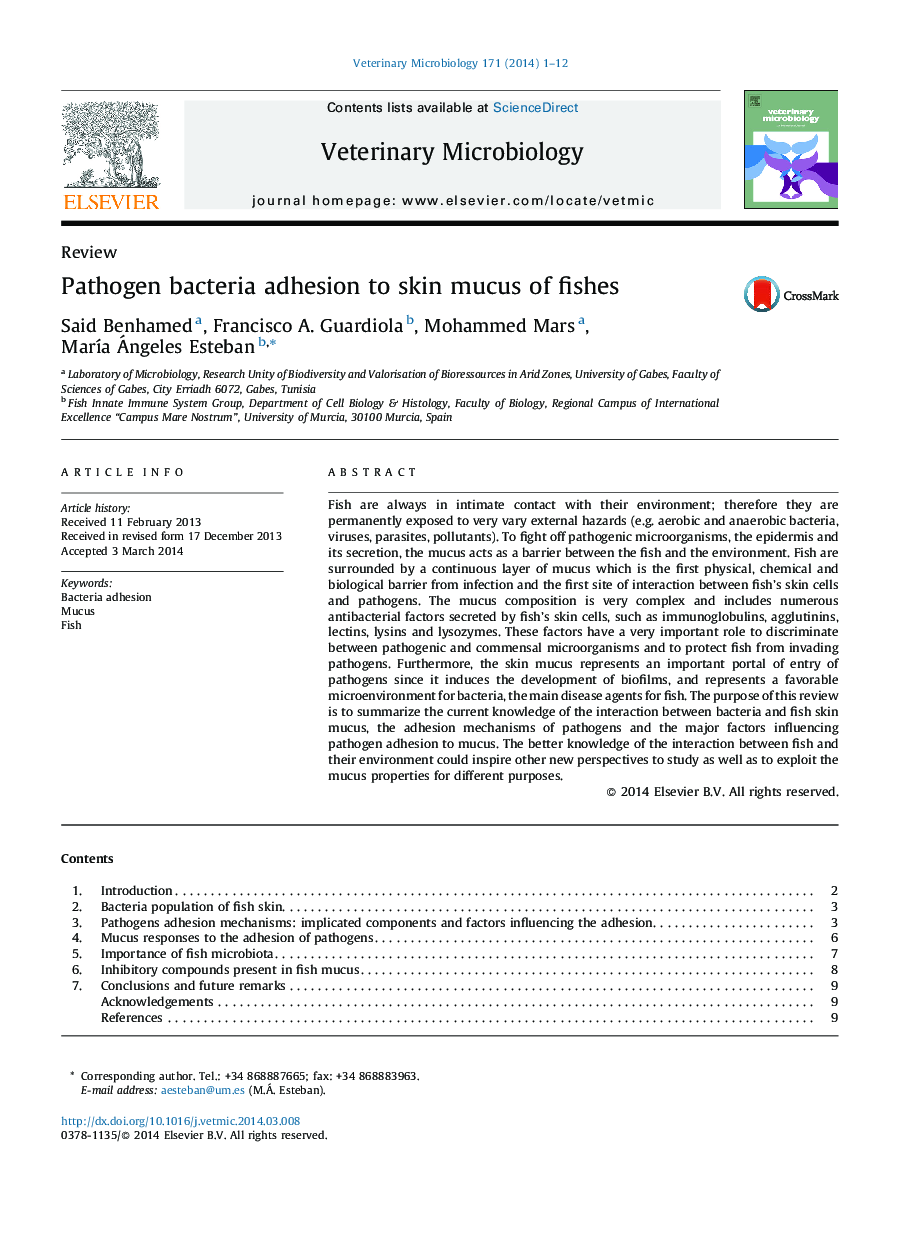| Article ID | Journal | Published Year | Pages | File Type |
|---|---|---|---|---|
| 2466579 | Veterinary Microbiology | 2014 | 12 Pages |
Fish are always in intimate contact with their environment; therefore they are permanently exposed to very vary external hazards (e.g. aerobic and anaerobic bacteria, viruses, parasites, pollutants). To fight off pathogenic microorganisms, the epidermis and its secretion, the mucus acts as a barrier between the fish and the environment. Fish are surrounded by a continuous layer of mucus which is the first physical, chemical and biological barrier from infection and the first site of interaction between fish's skin cells and pathogens. The mucus composition is very complex and includes numerous antibacterial factors secreted by fish's skin cells, such as immunoglobulins, agglutinins, lectins, lysins and lysozymes. These factors have a very important role to discriminate between pathogenic and commensal microorganisms and to protect fish from invading pathogens. Furthermore, the skin mucus represents an important portal of entry of pathogens since it induces the development of biofilms, and represents a favorable microenvironment for bacteria, the main disease agents for fish. The purpose of this review is to summarize the current knowledge of the interaction between bacteria and fish skin mucus, the adhesion mechanisms of pathogens and the major factors influencing pathogen adhesion to mucus. The better knowledge of the interaction between fish and their environment could inspire other new perspectives to study as well as to exploit the mucus properties for different purposes.
